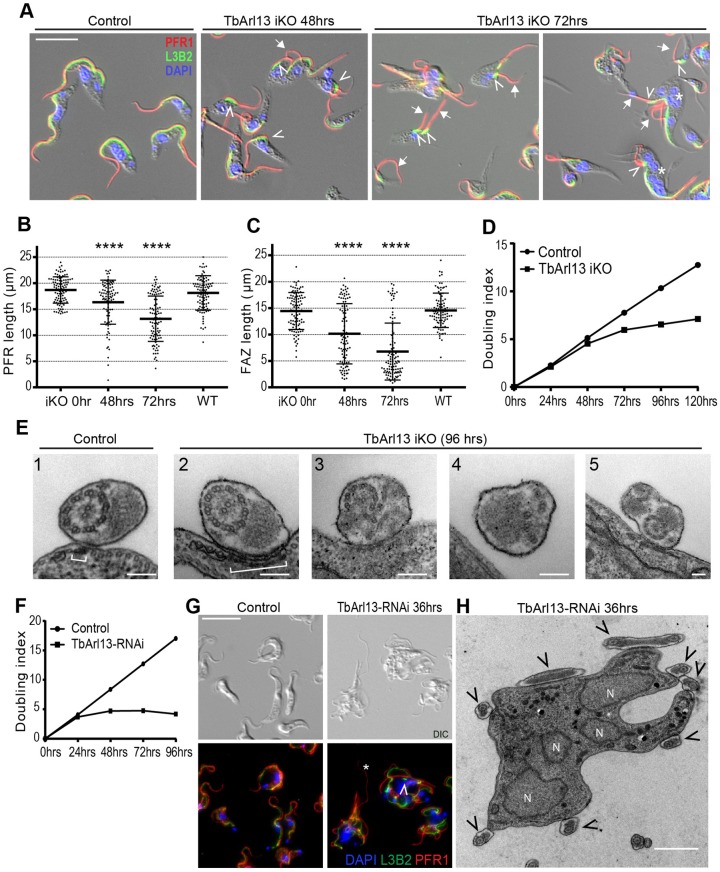Fig. 3.
TbArl13 is essential for flagellum biogenesis and cell survival. (A) TbArl13 iKO cells at 0 h (control), 48 h and 72 h upon tetracycline removal were labeled with anti-PFR1 antibody to mark the PFR (red), L3B2 for the FAZ (green), and DAPI (blue). Cells with shortened FAZ (arrowheads) and detached/shortened flagella (arrows) are observed. Scale bar: 5 μm. (B,C) Statistical analyses of PFR and FAZ length measurements. Single flagellated cells were measured for each time point (n=99, 92, 100, 95 for 0 h, 48 h, 72 h and WT respectively), and the results are shown as mean±s.d. ****P<0.0001 [two tailed Student's t-test was used to evaluate the significance of difference between the test groups and the control group (iKO 0 h)]. (D) Growth curves of TbArl13 iKO and control cells. The growth curves shown are representative of two independent experiments. (E) Representative TEM images of flagellum from control and TbArl13 iKO cells (96 h post induction). Brackets: FAZ filaments. Scale bar: 100 nm. (F) TbArl13-RNAi leads to growth arrest in BSF cells. The growth curves shown are representative of two independent experiments. (G) BSF control and TbArl13-RNAi cells were fixed and labeled with anti-PFR1 antibody (red), L3B2 (green) and DAPI (blue). Asterisk, detached flagellum; arrowhead, shortened FAZ. (H) Representative TEM image of a TbArl13-RNAi-induced ‘monster’ cell with multiple nuclei (N) and flagella (arrowheads). Scale bar: 1 μm.

